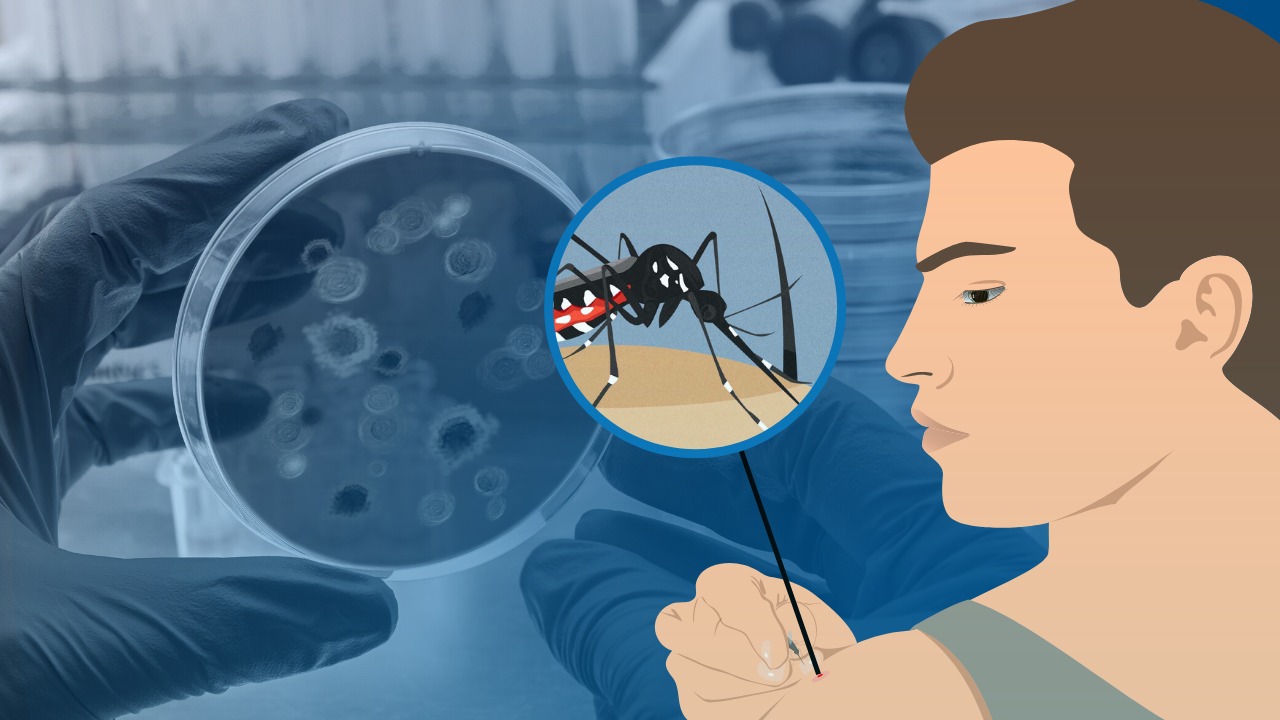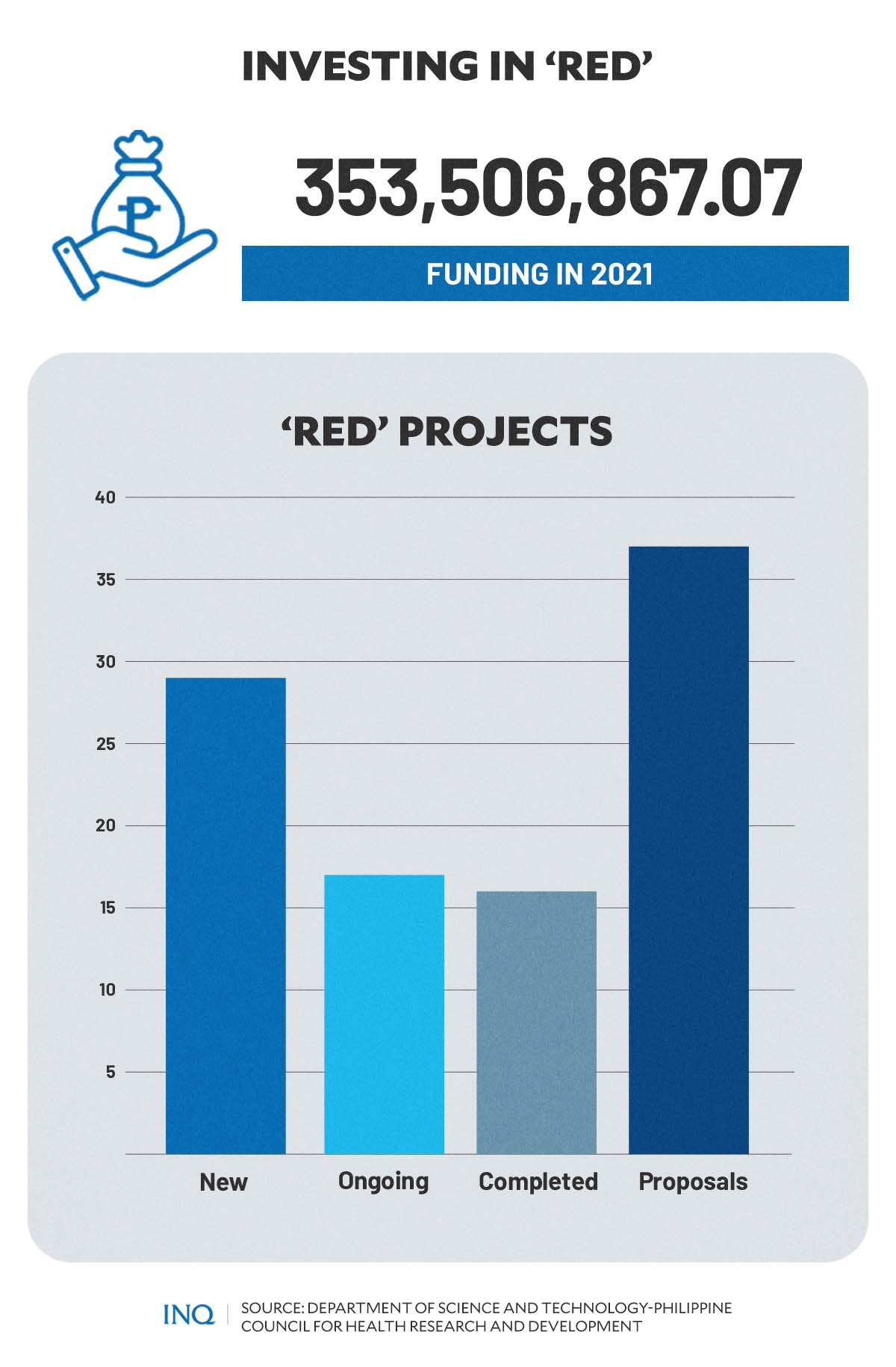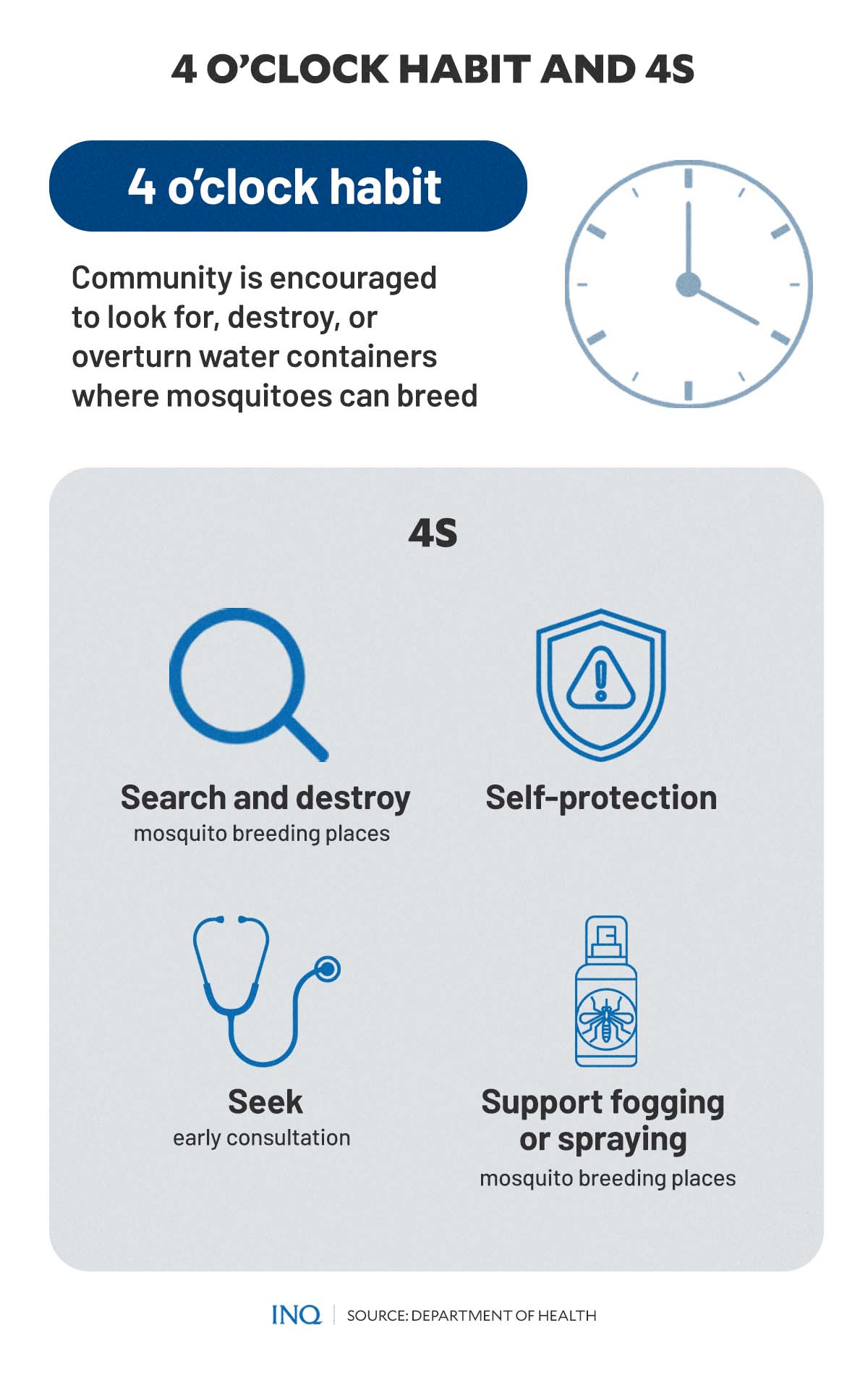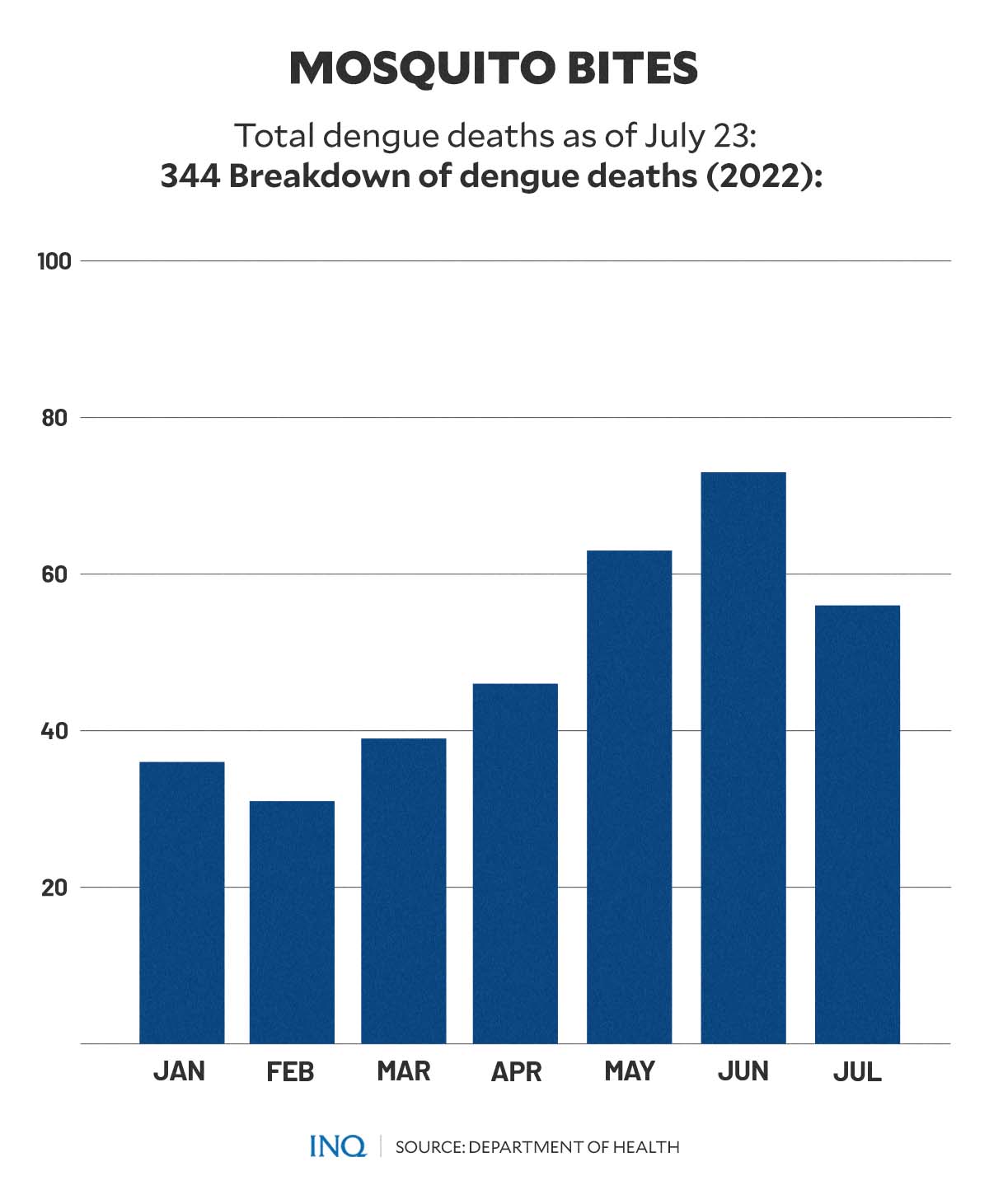Filipino scientists’ work shows promise in fight against dengue
(Second of two parts)
MANILA, Philippines—From genome sequencing and observing the behavior and adaptation of Aedes aegypti—the mosquito breed that can spread dengue, chikungunya, Zika, and yellow fever viruses—to testing the effectiveness of insecticide traps, Filipino researchers are achieving scientific breakthroughs to control the incidence of dengue in the country.
The global rate of dengue, a viral infection transmitted to humans through the bite of infected mosquitoes, has been increasing in the past years. It is estimated that 100 to 400 million infections occur each year.
Cases and deaths due to dengue continued to rise amid the COVID-19 pandemic. Data from the European Centre for Disease Prevention and Control (ECDC) found that this year, the countries with the most dengue cases were Brazil, Vietnam, Philippines, Peru, and Indonesia.
While scientists outside the Philippines try to combat the disease through genetic mutations and harmless bacteria, Filipino scientists are focusing on programs and projects that could develop more effective strategies for managing dengue, one of the perennial killer diseases in the country.
Article continues after this advertisementREAD: Changing mosquito genes, spreading bacteria: Science sees success vs dengue
Article continues after this advertisementIn this article, INQUIRER.net will provide details on the government-backed programs and projects by Filipino scientists and researchers which could help address the burgeoning dengue problem in the country.
‘RED’ program
In 2021, the Department of Science and Technology–Philippine Council for Health Research and Development (DOST-PCHRD) created a new research and development (R&D) program under its grant services: the Re-emerging and Emerging Diseases (RED) program.
The program, which was officially introduced in March 2022 along with two other new R&D programs, was created as an expansion to the Dengue and Other Arboviruses program of the DOST-PCHRD.
“Building from the previous program on arboviruses, RED focuses on the development of local and novel technology platforms, therapeutics, preventive measures, surveillance, and control and management protocols against re-emerging and emerging diseases,” the sectoral council of DOST said in its 2021 annual report.
Currently, there are 29 new projects, 17 ongoing projects, and 16 completed projects under the program. There are also 37 proposals waiting for approval or go signal.
The program received P353,506,867.07 in research investments from the PCHRD in 2021 to fund the project under RED. Among those funded were projects that are focused on finding and providing evidence to support the country’s dengue control program.
These include the Aedes Adaption Genomics Program and the Horizontal Auto-Dissemination of Pyriproxyfen Larvicide (AD-FPF) For Dengue Mosquito Control Trials in the Philipines Program.
‘Aedes Adaption Genomics Program’
According to DOST-PCHRD, the Aedes Adaptation Genomics Program has three projects which aim to investigate the adaptive capability of Aedes aegypti and Aedes albopicus—mosquitoes carrying dengue virus—depending on varying traits and external factors such as temperature and photoperiod, or length of day or night in the dry season.
Those three projects were:
- Project 1: Assembly and Annotation of Aedes Genomes from Philippine Samples—by Dr. Arturo Luisma, University of the Philippines Diliman
- Project 2: Phenotypic and Genetic Adaptation of Aedes aegypti to Hot or Cold Conditions in the Philippines—by Dr. Frances Edillo, University of San Carlos
- Project 3: Functional genomics of Aedes aegypti: gene expression and adaptation to heat—by Dr. Jose Enrico Lazaro, National Institute of Molecular Biology and Biotechnology, University of the Philippines Diliman
Results from the studies conducted for the three projects also showed promise.
For the first project led by Luisma, researchers used sequencing technologies and bioinformatics “to generate high-quality genome assemblies or groups of genome sequences joint together for Aedes aegypti and Aedes albopictus.”
The study found that there is a high possibility for successful assembly of the genomes, which researchers said are important resources in “ identifying genes linked to certain traits of the species, genes that are useful in population studies, and the role of these genes in the adaptive capability of the species.”
The second project examined whether frequent changes in temperature and photoperiod impact the hatching behavior of Aedes aegypti eggs.
Researchers collected eggs from selected highland and lowland areas across Luzon, Visayas, and Mindanao, which were exposed to different environmental temperatures (18 °C, 25 °C, and 38 °C) and were observed for six weeks.
The researchers found that temperature has a “great influence” on the mosquito population and disease transmission.
“This is due to its effect on the scarcity of breeding sites, rate of mosquito development, reproduction, and survival,” the PCHRD explained.
“Thus, the study suggested considering the year-round implementation of the national 4S strategy against dengue which is currently implemented only during the wet season.”
The third project—which took off from previous studies that showed how various environmental cues affect egg hatching and the survival of mosquitoes in unfavorable conditions—focused on identifying and studying the genes affecting heat adaptation in mosquito eggs collected from Quezon City and Baguio City.
Results showed that samples from Baguio City, a highland area, exhibited adaptation towards unfavorable conditions—also known as “embryonic dormancy.” However, the trends, based on the project, were not consistent.
“Understanding the genetic basis for health adaptation of Aedes species can help inform prevention, mitigation, and reduction programs to control mosquito outbreaks,” the PCHRD said.
Controlling dengue with ‘InDAI’
Researchers also explored using Innovative Auto-Dissemination of Insecticides (InDAI) traps to mitigate the spread of dengue-causing mosquitoes.
InDAI traps, according to PCHRD, are small cup-like traps containing a larvicide called pyriproxyfen—which are meant to control the increase of mosquitoes.
“Once a mosquito rests in an InDAI trap, it carries the larvicide and can contaminate natural breeding sites.”
The InDAI traps look slightly similar to the Mosquito Ovicidal-Larvicidal (OL) trap system launched in 2011 by the DOST.
An OL Trap comprises a black canister, a lawanit paddle, and pellets.
“The trap works by attracting female mosquitoes to lay eggs on the paddle drenched with an organic solution,” the DOST explained.
“This solution kills the eggs and larvae, preventing mosquitoes from reaching adulthood.”
The OL Traps led to significantly reduced mosquito densities and dengue transmission in many areas across the country.
READ: Gov’t to distribute 81,000 mosquito traps to cut dengue rise
Meanwhile, to gauge the effectiveness of InDAI traps, the Horizontal Auto-Dissemination of Pyriproxyfen Larvicide For Dengue Mosquito Control Trials in the Philippines (AD-FPF) Program conducted three (3) research projects, namely:
- Project 1: Performance of an Innovative Auto-Dissemination of Insecticide (InDAI) for Dengue Mosquito Control in the Philippines—by Dr. Lilian de las Llagas, University of the Philippines Diliman
- Project 2: Efficacy of Auto Dissemination in Reducing Dengue Incidence in the Philippines—by Dr. Antonio Ligsay, St. Luke’s Medical Center
- Project 3: Factors Affecting the Acceptability of an Innovative Auto-Dissemination of Insecticides for Reducing Dengue Incidence in the Philippines—by Dr. Elena Pernia, University of the Philippines Diliman
Researchers also conducted a fourth project: Project 4 Effect of Auto-Dissemination-Pyriproxyfen (AD-FPF) on the Dengue Incidence through the Use of Den NS1, IgG, IgM, Rapid Test.
After the deployment of InDAI traps in selected dengue-endemic cities in the country, the first project made observations and evaluated the effectiveness of using the traps in reducing the number of dengue-carrying mosquitoes.
Results from the study showed that the traps were effective in reducing dengue carriers.
Researchers concluded that InDAI traps are a “promising method to help mitigate the spread of the disease.”
“From baseline data, there was a notable reduction of mosquito-infested drums.”
The second project focused on studying whether there will be significant changes in dengue incidence among people within 200 meters of the auto-dissemination stations.
Researchers discovered that the likelihood of getting dengue decreased within three months in areas where the auto-dissemination traps were placed—and continued to do so after four months.
However, the study noted that the result was not statistically significant.
“Despite this,” PCHRD said, “the use of Auto-Dissemination to reduce dengue incidence may be explored and studied further with a larger population and longer duration.”
Researchers who worked on the third study found that using information, education, and communication materials, the project highlighted the financial impacts of dengue on a household could encourage participation in dengue control activities in communities.
“The study showed how well IEC materials can be integrated in a campaign tailor-fitted for a specific community,” PCHRD said.
A 2018 research found that in the Philippines, dengue has led to an economic loss of US$139 million, or around P5.9 billion, and costs to patients and families of US$19 million, or P827 million.
Every year in the Philippines, dengue has been estimated to cost a productivity loss of US$19 million or P821 million.
READ: Dengue fever: Upstaged but not outmatched by COVID-19
4 o’clock habit and 4S
To curb the spread of the mosquito-borne disease, the Department of Health has also been encouraging local government units (LGU) and the public to follow some preventive measures.
One of these was the 4 o’clock habit where communities are urged to search and destroy or overturn containers or areas which attract mosquitoes.
The health department reminded the public to always remember the 4S:
- Search and destroy mosquito breeding places.
- Self-protection.
- Seek early consultation.
- Support fogging or spraying in areas with a recorded increase in cases for two consecutive weeks to prevent an impending outbreak.
Increasing cases
According to DOH, as of July 23, dengue cases in the country rose to 92,343—118 percent higher than 42,294 cases logged during the same period last year.
Among the regions with the highest dengue cases were:
- Central Luzon: 15,951 or 17 percent of total cases as of July 23
- Central Visayas: 9,429 or 10 percent of total cases as of July 23
- Metro Manila: 7,962 or 9 percent of total cases as of July 23
The health department also recorded 344 deaths due as of July 23.
Data showed increased dengue-related deaths in the country since the beginning of the year—with 36 deaths in January, 31 in February, 39 in March, 46 in April, 63 in May, 73 in June, and 56 in July.
READ: Dengue cases in PH continue to swell: 92,343 as of July 23





